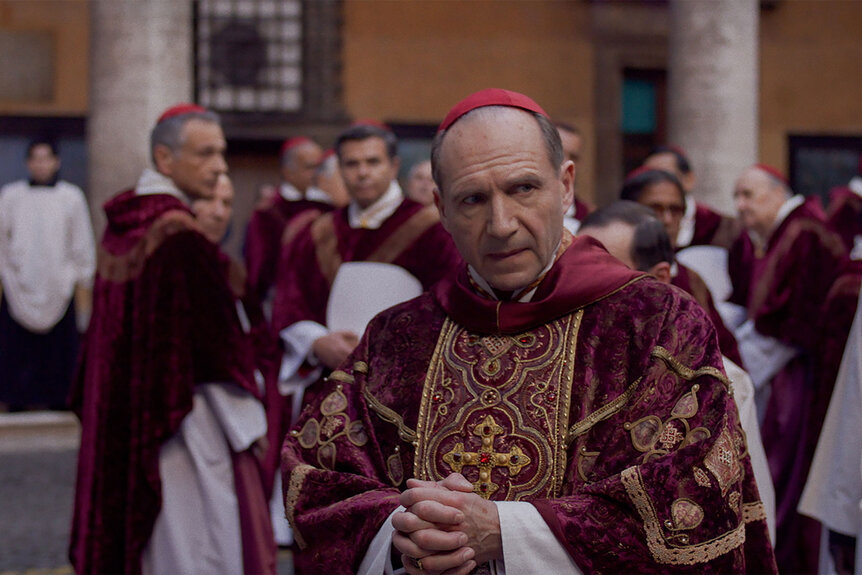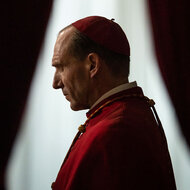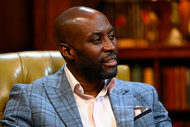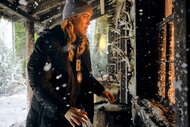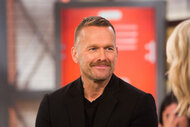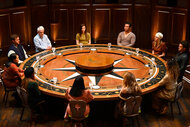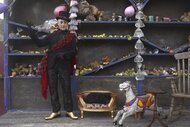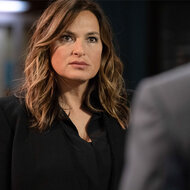How a New Pope Is Chosen: The Real World Inspiration Behind Conclave
A papal conclave is one of the most secretive events in the world; Conclave attempts to take us inside.
Oscar-winning director Edward Berger’s mystery thriller Conclave, based on the 2016 novel by Robert Harris, takes viewers inside the highly secretive process of electing a new leader of the Roman Catholic Church. It follows Cardinal Lawrence, (Ralph Fiennes), Dean of the College of Cardinals, the man responsible for leading the papal election. Along the way, Cardinal Lawrence uncovers startling secrets which threaten the proceedings and, maybe, the very foundations of the church.
Is Conclave a true story?
No. The story of Conclave is fictional, but the setting is based on how actual papal conclaves work.
A papal conclave, the event through which a new pope is elected, is a complicated process which has evolved dramatically over the last couple thousand years. One thing that has remained constant is the thick shroud of secrecy which covers the entire endeavor. Cardinals enter into a conclave under lock and key, taking a vow of eternal silence regarding what happens inside. It’s the perfect setting for a Hollywood thriller, but it’s not a total mystery. Here’s what we know about what happens in a conclave, and how the Catholic Church chooses a new pope.
RELATED: It's a Holy War in Focus Features' First Trailer for Catholic Thriller Conclave
Preparing to elect a new pope: The truth behind the fiction of the religious thriller Conclave
The first step in any papal conclave is the death or resignation of the prior pope. For the first millennium of the church’s existence, the Bishop of Rome (the pope) was elected and affirmed by local clergy and church members, just like any other local bishop. In 1059, the process was formalized to include the College of Cardinals, a collection of bishops and other Vatican officials from around the world (noted for their red vestments) personally chosen by the pope.
Once the papacy is vacated, governance of the Catholic Church temporarily falls to the College of Cardinals, though certain decisions are postponed until after a new pope is elected. In the meantime, the College of Cardinals holds a series of meetings called General Congregations at the Vatican. During these meetings, the College discusses the current needs and challenges of the global Church and prepares for the conclave.
How long does a real papal conclave take to choose a new pope?
A papal conclave typically takes place two or three weeks after the papal vacancy begins, when the cardinals gather in St. Peter’s Basilica for Mass. They ask for guidance from the Holy Spirit and walk to the Sistine Chapel, where the conclave takes place.
Once inside, security experts sweep the building for cameras, microphones, and other surveillance devices, everyone else is ejected from the building, the cardinals take an oath of silence, and the doors are sealed. The cardinals are not permitted contact with the outside world and no one leaves the chapel until a new pope is chosen. In the past, conclaves have drawn on for weeks or months, long enough for cardinals to die before a new pope is chosen.
Recently, conclaves have been relatively short. The 1978 conclave which elected Pope John Paul II began on October 14 and ended two days later. The 2005 conclave which elected Pope Benedict XVI lasted just two days as well, and the most recent conclave which elected Pope Francis took just about 24 hours. By contrast, the 13th century conclave which eventually elected Pope Gregory X dragged on nearly three years, from November 1268 until September 1271.
How do Conclaves elect a new pope?
Technically, any baptized Roman Catholic male can be elected pope. In practice, the candidates are limited to a subset of the College of Cardinals. While the total number of cardinals in the college often numbers over 200, there is a smaller set of approximately 120 which meet the age requirement (under 80 years old) to vote for or be elected the new pope.
On the first day of a papal conclave, a single vote is counted. Cardinals receive ballots inscribed with the Latin words “Eligo in Summum Pontificem,” meaning “I elect as supreme pontiff,” on which they write the name of their preferred candidate. Cardinals are asked to write the name in a way which won’t allow them to be identified, and fold their ballot twice. Next, they walk up to Michelangelo's fresco of the Last Judgment, say a prayer, and drop their ballot into a chalice.
RELATED: Everything to Know About Conclave, the Papal Thriller Starring Ralph Fiennes
Once all the ballots have been cast, the votes are counted aloud and recorded by three cardinals. In order to be elected, a candidate must receive two-thirds of the vote. If no candidate has been elected, the ballots are burned, and the conclave continues.
After the first day, up to four votes can be carried out on each day. If the conclave continues beyond four days, the fifth day is taken for prayer and discussion before voting continues. The conclave continues with bouts of voting broken by days of prayer and thought until a pope is elected.
Can a cardinal campaign to be named the pope during a conclave?
Cardinals don't campaign in the traditional way. They don't make street signs, hand out buttons, or officially throw their elaborate hats into the ring, but there is a more subtle sort of campaigning going on.
Before and during a conclave, cardinals discuss the global needs of the church and the merits of potential candidates. Coalitions and alliances are forged, something like political parties emerge, and they each act in support of their favored candidate. Conclaves might be made up of cardinals, but they are still human beings and hushed conversations in close quarters still hold some sway.
Black or white: What the color of Vatican smoke means during a Conclave
The events inside the Sistine Chapel are intentionally kept separate from the rest of the world, but there is one visual signal of the proceedings. During a conclave, Catholics around the world watch the smoke coming from the Sistine Chapel and pay close attention to its color.
If at the end of a vote, no new pope has been elected, the ballots are mixed with chemicals which produce a black smoke. If a Cardinal receives at least two-thirds of the vote, the Dean of the College of Cardinals asks if he accepts. If so, the new pope chooses his papal name, and the ballots are burned with chemicals which produce white smoke.
Roughly 30 to 60 minutes later, the new pope is announced from the balcony of St. Peter’s with the words “Habemus Papam,” meaning “we have a pope.”
How to Watch Focus Features' Conclave
Any drama, subterfuge, or mysterious machinations involved in real-world conclaves are kept beyond the view of the public. If you want to see inside one for yourself (and you don’t want to commit your life to religious devotion), your best bet is the movies. Conclave is streaming now on Peacock.
Originally published Oct 17, 2024.





